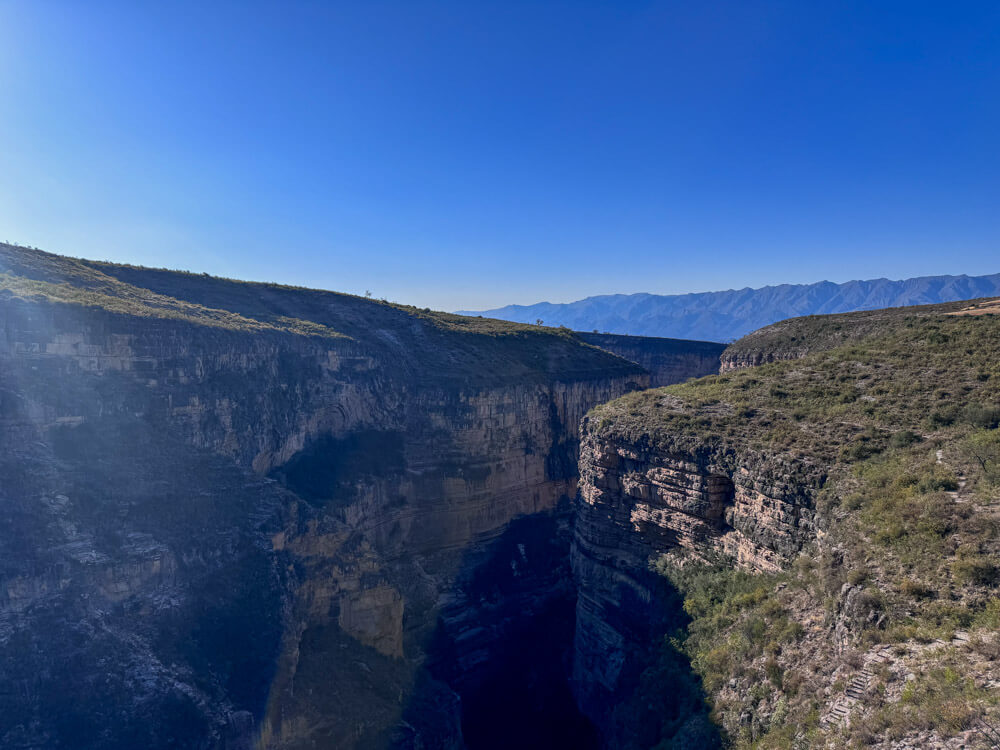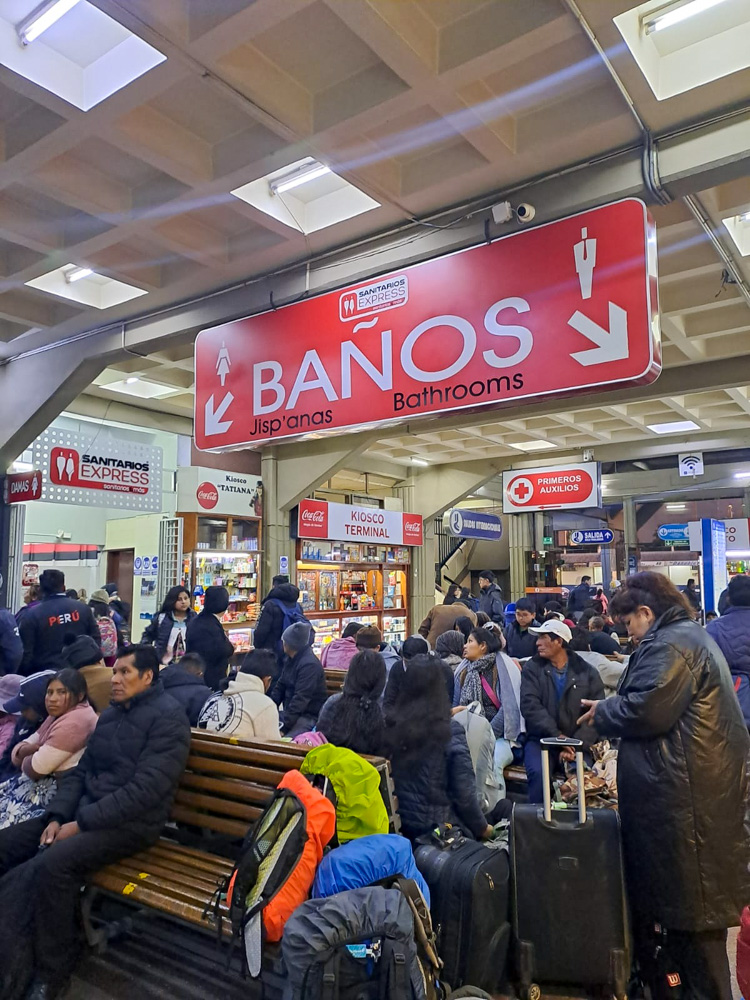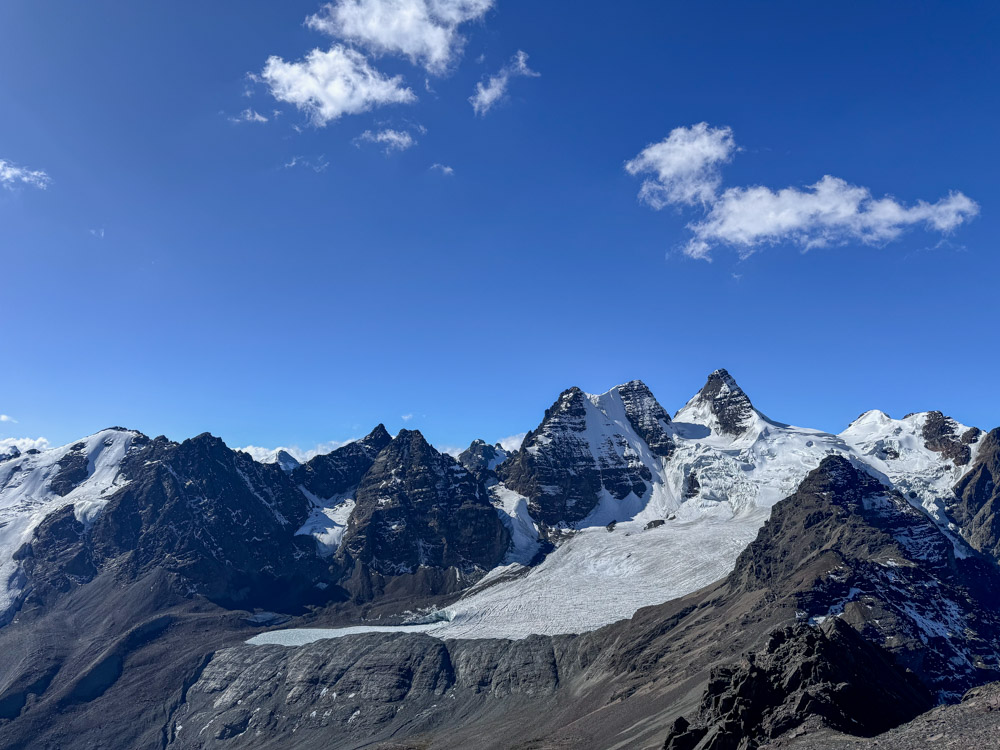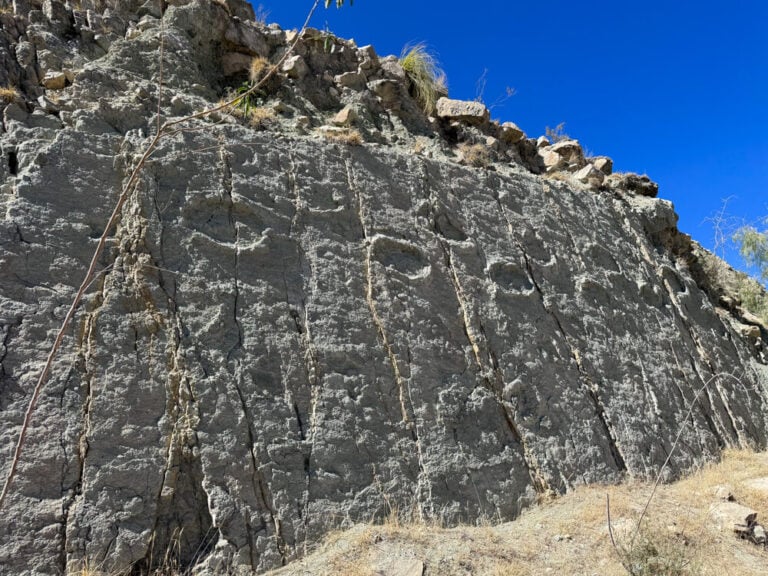How to Get Around Bolivia: Surviving The Overnight Buses

Home to the ‘World’s most dangerous road’, getting around Bolivia can be an adventure to say the least. For most visitors, the most convenient way to travel in Bolivia is to use the extensive network of overnight bus routes. This is what I did on my one-month solo trip around Bolivia.
However, Bolivia doesn’t exactly have the best reputation for road safety and the quality of its buses, and many visitors (including me) can be worried about using them. I read several articles online which made it seem that taking a bus in Bolivia would be one of most dangerous things I’ll ever do.
So, just how bad are Bolivia’s buses? Honestly, not that bad. I was pleasantly surprised by the overnight buses. They were comfortable, efficient and safely got me to where I needed to be. I did hear of some bad experiences from other travellers, but this was usually when they opted for the cheapest company rather than a reputable one. All in all, they’re not nearly as bad as the internet makes out.
Despite my great experience, I completely understand why some people are nervous about getting around Bolivia, especially solo travellers, which is why I’ve written this guide. Here, you’ll find information on how to get around the country (did you know Bolivia has trains and boats?) and some helpful tips for surviving those notorious overnight bus rides.
Enjoy!
How to get around Bolivia
Buses
Bus travel is a common way for both tourists and locals to get around Bolivia and almost all of South America. The bus networks here almost put Europe to shame, with nearly all major cities and towns connected by bus, even in some rural areas.
Without a doubt, the best way to get around Bolivia is to use the extensive bus network. This is often the cheapest, fastest, and most convenient way (unless you’re happy to splurge on flights) to get between the popular destinations in Bolivia.

Bolivian buses don’t have the best reputation, but I was pleasantly surprised by how comfortable and efficient the buses were (aside from a couple of delays).
Buses connect all the bigger cities and major towns in Bolivia, and it’s the common way for the local people to get around. Be prepared for some looooooong journeys. The buses in Bolivia cover long distances. My longest bus journey was almost eighteen hours!
Air Travel
Another option for getting around Bolivia is to fly. Most major cities, including Uyuni, La Paz, Cochabamba and Rurrenabaque, are connected by internal flights. While getting around by flight is quick, it can often be expensive and a hassle.
Boliviana de Aviacion is the national airline of Bolivia and the one with the most extensive routes around the country. It’s based in Cochabamba, so many flights have connections there. I didn’t plan my trip to Bolivia too well, so I flew between Cochabamba and Trinidad (for the Amazon) to avoid a 36-hour coach journey (!).
I don’t have any complaints about the airline. The flight was on time, and boarding was efficient. The planes seemed a little dated, but the airline has a good safety record (at least according to the internet). My only complaint was booking the flight. I ended up going into one of their offices to book, as the website didn’t want to accept any of my debit or credit cards.
Another popular airline in Bolivia is EcoJet, which offers similar (but fewer) routes to BoA. Both airlines have good connections with the main airport in La Paz, El Alto International Airport.
Ultimately, flying around Bolivia is possible, and there are daily flights between most major cities. However, the buses were much cheaper and more convenient for me.


Train Travel
Did you know Bolivia has a train network? I certainly didn’t. Okay, “network” is probably an exaggeration. However, several passenger trains operate in the country.
The most popular train journey for tourists is between the border town of Villazon to Oruro. If you’re crossing the border from Argentina, you’ll enter at Villazon, and honestly, you don’t want to spend much time here. Most visitors will head north to the beautiful town of Tupiza, and you can do this by Colectivo or train. There’s mixed information about the departure times online, but the trains appear to operate on Monday, Wednesdays, Thursdays and Saturdays.

Another famous train in Bolivia is the ‘Death Train’. This is a popular route for those entering Bolivia from Brazil and looking to reach Santa Cruz de La Sierra. Now, there is mixed information about the train online. Official websites claim the train no longer operates, but several travellers have recently used it. I also met a backpacker who had taken it the month before.
Annoyingly, this is sometimes the reality of travelling around Bolivia. Information can be hard to find online, and it’s often a case of asking around once you’ve arrived. If you know the latest information about the train, please contact me and I can update this article.
Train travel is certainly not the most common way to get around Bolivia, but it could be a fun idea if you’re looking for an adventure.
Boat
Bolivia is a landlocked country, but much of the border with Peru is Lake Titicaca. This stunning lake lies at 4,000 metres in altitude, and it’s absolutely beautiful. The Bolivian side of the lake is home to Isla del Sol, and this is the best place to visit if you want to spend some time making the most of the lake’s beauty.
To reach Isla del Sol, you’ll need to take a boat from Copacabana which takes about one hour.


Colectivo
Colectivos are a popular mode of transport across Latin America. They’re basically vans or unofficial mini-buses that are often filled with locals. Colectivos are a great and cheap way to get around Bolivia, but there are a few things to be aware of.
- They’re not available everywhere. Colectivos focus on shorter journeys, such as between Uyuni and Tupiza or Santa Cruz and Samaipata. They’re not (usually) an option for longer journeys over 3 or 4 hours.
- There’s no timetable. The vans don’t have a set timetable and only go when full. Sometimes, you might find yourself waiting an hour or even more.
- They’re unofficial. Colectivos are generally unofficial. This doesn’t necessarily mean they’re unsafe, but there’s no one monitoring the journey. I used them several times and didn’t have any issues.
- They can be uncomfortable. The drivers prefer the vans to be full before starting the journey. This can mean cramped seats, especially if you have luggage.
Colectivos often don’t have official bus stops, and don’t often appear on Google Maps. If you’re looking to get somewhere using a colectivo, I suggest asking your accommodation where to find them.
Group tour
For those who are nervous about travelling alone or simply want everything planned for them, consider a group tour around Bolivia.
There’s not a huge selection of group tours in Bolivia, and most companies tend to stick just to the main highlights of La Paz, Sucre and Salar de Uyuni. However, G Adventures has an affordable tour that covers off the main sights.

Hire a car
Hiring a car or campervan in Bolivia is growing in popularity. I met several couples driving around the country, and they only had good things to say. The road conditions have dramatically improved in recent years (although they can still be challenging in parts), and many local hostels and homestays have spaces for cars and campervans.
The main issue seemed to be getting fuel for the vehicle. There are fuel shortages in Bolivia, so gas stations tend to prioritise the locals. Visitors can also be charged a much higher price, which can eat well into your budget.
I looked into hiring a car in Bolivia, but all the paperwork and logistics didn’t seem easy (especially as I was alone). I also didn’t think I’d feel entirely safe as a solo female traveller. However, I’d love to return to give it a go.
Bolivia Hop
Popular among younger backpackers, Bolivia Hop is the same company as Peru Hop. The company operates a set bus route around Bolivia and Peru in a hop-on, hop-off style. It also includes pick-up from your hostel, an English-speaking guide, and help with booking any additional activities.
Since the pandemic, the company has reduced its operations in Bolivia and no longer has buses between the Salt Flats and La Paz (although the guides can help you book this). Instead, it operates a route between La Paz, Copacabana, Isla del Sol, and Peru.
I have really mixed thoughts on Peru and Bolivia Hop (which I used between La Paz and Cusco). Some benefits include a dedicated guide, meeting other backpackers, and hostel pick-up. Ultimately, however, I found the buses were not as described on their website (in my experience). My overnight bus between Bolivia and Peru with Peru Hop was the most uncomfortable I have experienced in all my travels around Latin America. Other travellers had similar experiences and were equally as disappointed.
If you’ve travelled solo before and it’s not your first time in Latin America, I don’t personally believe that paying the extra money for Bolivia/Peru Hop is worthwhile. In fact, you’ll probably find it a bit frustrating. However, if you’re nervous about the overnight buses and haven’t travelled solo before, signing up for one of their passes might be a sensible option.
Put it this way: I’m relieved I decided to test a shorter route before signing up for the full thing.

Public Transportation
Bolivia doesn’t have the best public transportation, and it’s known to sometimes be dangerous and uncomfortable. However, that doesn’t mean you should rule it out altogether.
One of the best public transportation systems I’ve ever used is the Mi Teleferico network in La Paz. This is a network of cable cars around the city. It’s a fun way to get around, and there are incredible views of the city.
If you’re in La Paz, don’t miss riding the Mi Teleferico.

Are the buses dangerous? My experience
Bolivia’s roads have a reputation for being dangerous. Bus crashes are a frequent occurrence (especially in the rainy season), and there have sadly been deaths in the past. The roads can be windy, steep and sometimes unpaved. Some drivers are known to work long hours, and drunk driving is also a problem.
But let’s be honest: Nothing in life is completely safe. Bus crashes can and do happen anywhere in the world.
One thing to note is that the safety of Bolivia’s private bus network has come a long way in recent years. Firstly, many roads are now paved, meaning driving on them is a lot safer. In addition, many bus drivers are now part of a union with strict rules to protect their drivers. This means well-maintained buses, fairly paid drivers and stricter working hours, making it safer for everyone.

Based on my experience, the overnight buses in Bolivia are a great way to get around the country. They’re nowhere near as bad as I expected, and I never once felt unsafe. I took six overnight buses while in Bolivia, and they were all in great condition with excellent drivers. Several of the buses even showed the speed of the bus so you could see exactly how fast the driver was going.
This seemed to be the consensus amongst travellers; we were all surprised at how comfortable and great the buses were. However, it’s essential to choose the right company. Some companies still lack safety, especially with who they hire to drive the bus. I met one guy who had taken a cheap, local bus, and he spent the night fearing for his life as the bus driver sped across mountain passes.
I’ve discussed which companies to choose in the section below.
The other safety concern with buses in Bolivia is robberies and petty crime. In Ecuador, the buses were known to be a hot spot for bags being stolen or people coming on board with guns and stealing everything.
Thankfully, this is a rare occurrence in Bolivia. It can happen, but the chances are low if you stick to the tourist route and choose a reputable bus company. That’s not to say you should flaunt your belongings. Keep them safe, and try not to draw attention to yourself.
Ultimately, there is always a risk when taking an overnight bus in Bolivia, but the country has come a long way in recent years. The roads are safer, most private buses are well-maintained, and drivers are better protected. Remember, this is when you choose a reputable company.
The buses were nowhere near as bad as the internet makes out, so don’t be put off by those scary posts on the internet.

Tips for surviving an overnight bus
Book in advance
It’s a good idea to book your bus tickets in advance, especially in the high season. My first overnight bus from Tupiza was cancelled due to a technical issue. All the other buses that night were full, so I had to stay an extra day.
You can book your tickets online using BusBud or Tickets Bolivia. Both are reputable and a safe way to pre-book your bus tickets with a good bus company. It’s worth noting that not all available buses seem to appear on these websites. They can also be slightly more expensive. With this in mind, you might prefer to go to the bus station in advance to book your ticket.
Arrive at the bus station in plenty of time
The bus terminals in Bolivia are some of the most chaotic places I have ever been. There are endless companies, hundreds of people, and so many platforms with little signage.
Before you board the bus, you normally need to find the bus company’s stand and exchange your e-ticket for a physical ticket (this is the case in Bolivia but not in Peru). Finding the stand can take a few minutes, and there are often queues. Then, you still need to find the platform.
You’ll also need to pay the terminal tax for the station, which is usually 2 or 3 Bolivianos. Sometimes, you hand this to a staff member as you board the bus; other times, you must queue and get a receipt.
Ultimately, get to the station at least 30 minutes before your bus. This will give you time to do everything you need to do.

Take toilet paper
Most of the better bus companies will have toilets on their bus routes, but they’re not always the most pleasant. They also don’t supply toilet paper, so make sure to take some with you (as well as hand sanitiser).
Take snacks and water
Most of the buses in Bolivia don’t stop at any point, and there’s no opportunity to jump off and grab a snack. Make sure you have enough water and snacks with you for the journey.
Some companies serve meals between La Paz and Uyuni, but check this in advance.
Dress for all temperatures
I swear I went through every season on those overnight buses. It usually started off boiling hot, then quickly felt like being back in Antarctica.
Expect to feel every temperature during the bus ride. Some buses provide blankets, but don’t rely on this. I recommend having extra layers to hand in case it gets too cold.

Remember earplugs (and maybe an eyemask)
All the buses I took in Bolivia were overnight, but they were still noisy. It seems common for locals not to use headphones when listening to music or watching videos, which was a bit of a culture shock for me.
Make sure you have earplugs or headphones to drown out the noise. They’ll turn the lights off at night, but you may still benefit from an eyemask.
Hide your valuables away
I didn’t encounter any issues with petty theft while in Bolivia, but it does happen. The overnight buses tend to be safer as there are limited stops for people to get off with your valuables, but it’s a sensible idea to keep an eye on them.
I carried my money, phone, and passport in a cross-body bag that always stayed on me. I also kept my day backpack with my laptop by my feet. I did leave it when I had to use the bathroom, but no one seemed to care or notice (and everyone was doing it).
However, crimes can happen, so use your best judgment.
Consider an Air Tag
Since losing my luggage in 2021, I’ve always left an Air Tag inside my main backpack. This means I can track my bag and always know where it is.
This is especially useful on bus routes with several stops. I can keep an eye on where my bag is to ensure it is always on the bus.
The Air Tags aren’t overly expensive; you can replace the battery rather than buy a new one each year.

Plan for your arrival
Most overnight buses arrive at their destinations in the early hours of the morning. The earliest I got in was 4 am, but more often than not it was around 6 am. It was normally still dark, which can make getting to your accommodation all the more intimidating.
It’s a good idea to research in advance and find the best way to your hotel. There were usually taxi drivers waiting outside the bus station, and one time, my hostel sent someone to pick me up (at an extra cost).
If you’re travelling solo in Bolivia, consider if walking to your hotel in the dark is safe. The owner of a hostel in Samaipata advised me against this as there had been issues with aggressive dogs attacking people walking by themselves.
Have some small change
When leaving the bus stations in Bolivia, you must pay a departure tax. This is usually 2 or 3 Bolivianos and must be paid in cash.
Toilets at the bus stations are also an additional cost. I’d suggest carrying some small change with you to make paying for anything you need easier.
Check the type of bus
Before booking your ticket, it’s worth checking the bus details. Many types of buses operate in Bolivia, including double-deckers, old-school style coaches, flashy “suite” buses with curtains for each passenger, or economical but comfortable regular buses.
Both Bus Bud and Tickets Bolivia should provide details about the bus. This includes whether it has a toilet, the seating plan (look for ones with only three seats in a row to give you more space), and other amenities such as personal screens or curtains.
Have some entertainment
You’ll likely spend a long time on buses while in Bolivia, so have some entertainment ready. Whether this is a book, a film downloaded on your phone or music to listen to, you’ll no doubt want something to keep you occupied.
Note: I avoided taking out my laptop on buses, even to watch films, because I didn’t want to attract attention to myself. Of course, use your own judgment and common sense.

The best bus companies in Bolivia
Okay, so which bus companies should you use? Well, it’s a tricky one. While several ‘good’ companies exist, you can never be guaranteed a safe driver or spotless bus. However, you certainly increase your chances by going with a reputable company.
Here are some of the better-known companies in Bolivia. These won’t necessarily be the cheapest, but they tend to run a higher standard of service:
- Trans Copacabana (this is one of the most popular bus companies in Bolivia)
- Todo Turismo (highly recommended for La Paz > Uyuni. You get food and water)
- 6 de Octubre (this is who cancelled my bus due to a tech issue, but they were very helpful and rebooked me on their next available bus)
- Bolivar
- Transportes el Dorado (I used one of their ‘suite’ buses and it was SO comfortable).
I suggest using Bus Bud or Tickets Bolivia to book your tickets.
I hope you enjoyed this article and found it useful. Enjoy your trip to Bolivia!






